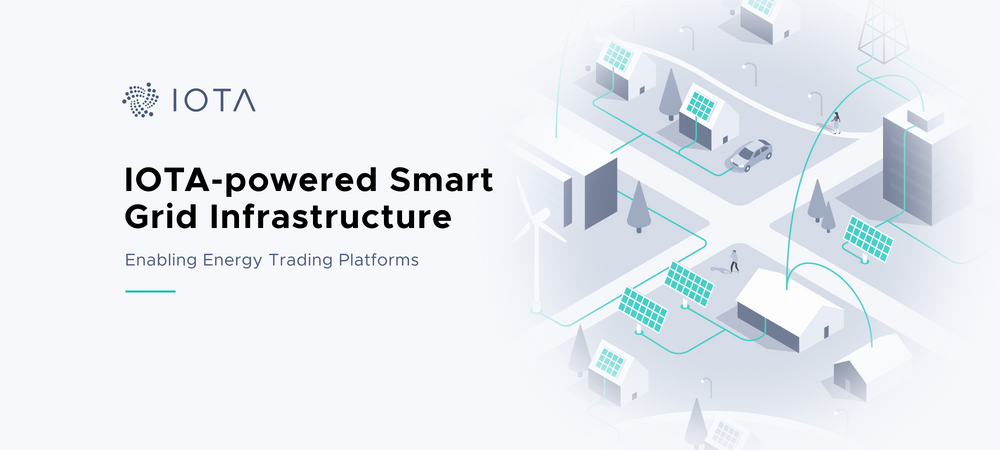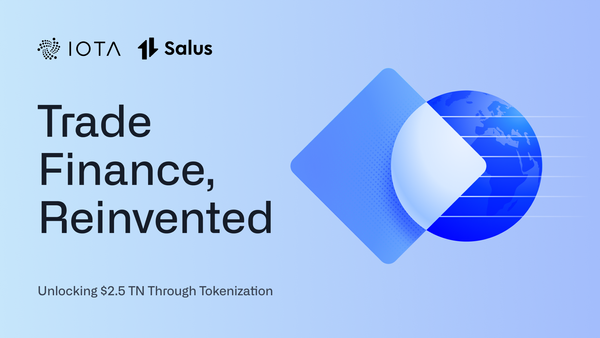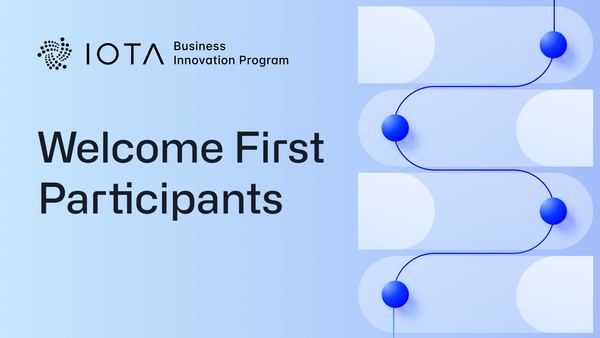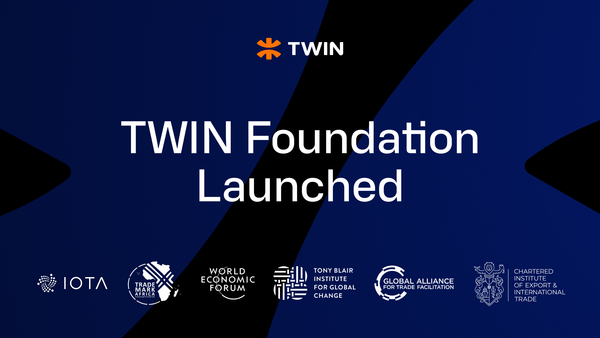IOTA-Powered Smart Grid Infrastructure
Enabling Energy Trading Platforms
A few months ago the European Innovation Radar identified the IOTA Foundation (IF) and the energy trading platform developed under the +CityxChange project respectively as key Innovator and high potential innovation.
Recently, the impact of this same innovation has been recognized by the TM Forum, which also awarded the IOTA Foundation (IF), and a number of other partners, for the business impact of their solutions. The award was part of the TM Forum Catalyst innovation competition set up as part of the Digital Transformation World conference, the Forum flagship event, this year fully hosted online and recently ended on November 12th.
But what is the core innovation that brought IF this accomplishment? We describe this in the following article.
Let’s start from the beginning…
Since 2018, as part of the European project +CityXchange, IF has been collaborating with a number of smart energy partners operating in Trondheim, Norway, and Limerick, Ireland.
After an initial setup phase, which involved use case and architecture discussions, finally during 2020, the project’s development phase kicked off. IF joined efforts with NTNU, ABB, Powel, TronderEnergi and SmartMpower.
Building on the requirements from stakeholders in the lighthouse cities, Limerick and Trondheim, IF tested an MVP of a decentralized Energy Trading Platform. You can watch a summary of this work in this video or keep reading the remainder of this blogpost for more details.
First things first: What does energy trading mean? And why is it important?
Nowadays, global energy use has its two major vectors in (i) buildings, which have approx. 40% of total primary energy demand and in (ii) transportation, which account for approx. 28% of the same energy demand.
Despite the high energy consumption associated with buildings, recent innovations in smart building technology are starting to invert this trend.
Thanks to the continuous and increased development of distributed renewable energy sources, such as rooftop solar photovoltaic, and the improvement of local energy storage technologies, some buildings can now become positive energy buildings. An example of this is the Powerhouse Brattørkaia in Trondheim, shown in the figure below. The building is fully cladded with solar panels.
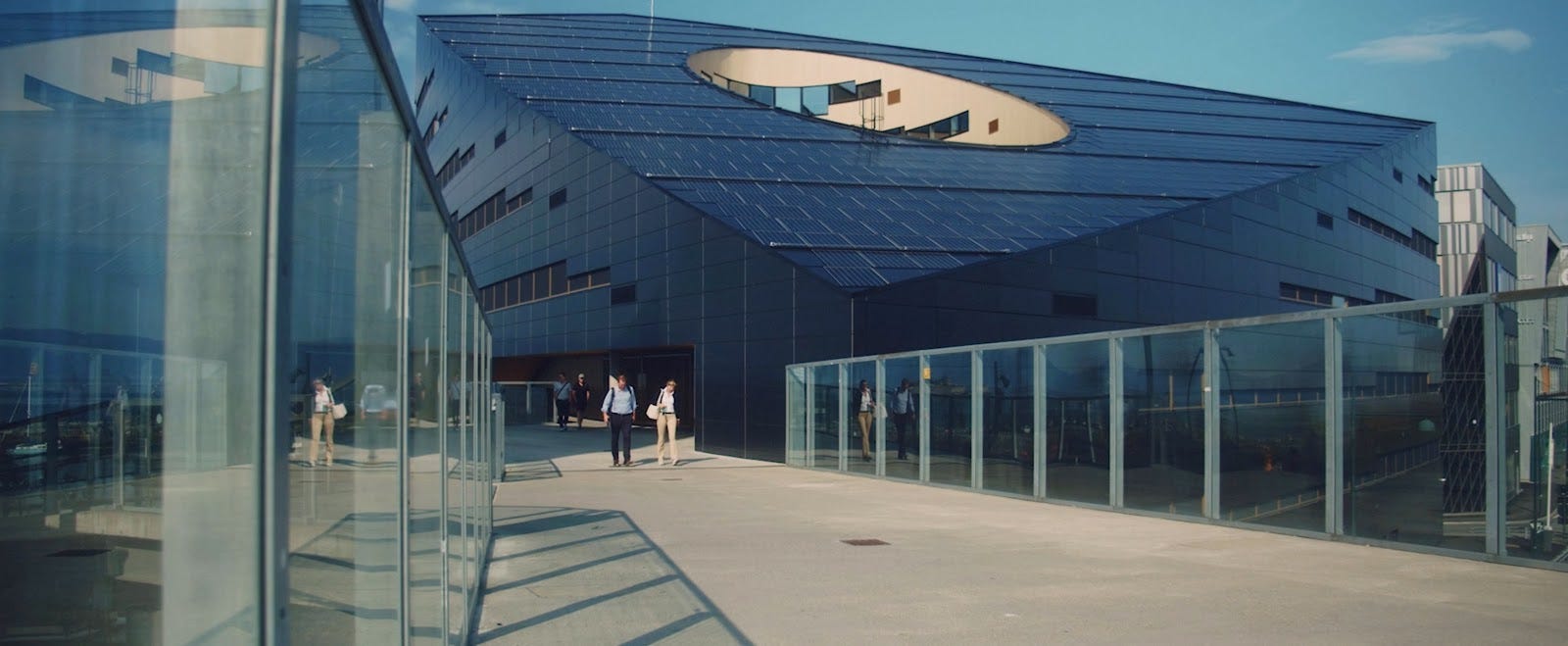
Thanks to the ability to produce energy from renewable sources, combined with other smart technologies, a positive energy building is then able to act as a flexible energy system. This means that it efficiently manages its production and consumption of energy, to the extent of producing more energy than it needs for its operation while reducing its overall load on the energy grid. As a result, microgrids can become more agile.
Combining this innovation with the improvement of IoT and smart metering technologies, the energy produced and consumed by positive energy buildings can be measured in real-time and even be forecasted when historical data is combined with current weather conditions and processed with AI algorithms.
Positive energy buildings create a surplus of energy that can be stored or redistributed. And why would they do so? To meet the needs of other buildings and the neighborhood as a whole. Energy surplus could then be traded and exchanged locally. Not only buildings but also city districts could become self-sufficient “energy islands” if not even create an energy surplus.
To enable this smart grid innovation, a new type of digital infrastructure is needed.
So what is the role of such digital infrastructure?
To build an energy trading platform, connected agents that control energy assets (i.e., battery storage, solar panels, etc) need a data-sharing infrastructure to post offers to sell available surplus energy (supply-side). At the same time, other agents need to post requests to buy the available energy (demand side).
When this information becomes available, trading platforms with the help of dedicated optimization algorithms can best match demand and supply and achieve energy balancing across the marketplace of connected assets, buildings, and ultimately districts. Making this possible, i.e., being able to monetize energy surplus and flexibility, allows for further deployment and integration of distributed energy resources in urban environments.
Why doesn't digital infrastructure with data sharing already exist?
First of all, because there was no need for it until now. Only recently, the spread of many enabling technologies made it possible to create energy excess.
Secondly, the idea of trading energy surplus in a decentralized way contrasts with legacy market designs and business models which were built on the premise of a more centralized power system.
It is only now that a paradigm shift started to emerge. Grid operators are now recognizing the opportunity to avoid expensive grid reinforcement associated with the integration of decentralized energy resources by becoming orchestrators of locally balanced energy markets. Regulations are also starting to adapt to this emerging opportunity landscape.
The need for a scalable underlying digital infrastructure is now becoming evident. In addition, we also understand how such data is generated by a diverse set of independent stakeholders and how ensuring compliance and transparency of this data flow and its processing is of paramount importance.
Centralized, cloud-based data sharing infrastructure introduces friction which may not be compatible with the vision of open and transparent markets deployed in such decentralized ecosystems. A black box approach introduces a single point of failure and threat of data or processing manipulation and tampering. Furthermore, in order to scale, ensure optimization and introduction of further innovation, centralized infrastructure will be continuously challenged to meet growing needs for data sharing and interoperability requirements.
This is why emerging open source technologies, such as distributed ledgers (DLTs), are now gaining attention as potential building blocks for open and transparent smart city and energy infrastructure. By sharing the data required by these energy trading platforms and their optimization algorithms on a shared decentralized infrastructure its exclusive access to a pre-selected number of aggregators is removed. As a result, access to such data is democratized, while transparency and traceability are guaranteed.
However, a data-sharing infrastructure is only one part of the equation. What else is needed?
The answer is a value exchange infrastructure. And can this be centralized? Yes, however, there could be benefits to decentralizing this too.
The reasons are the following. Participation in energy trading from prosumers (i.e., assets producing and consuming energy surplus) should be frictionless and incentivized by rewarding their owners directly. An optimal approach would leverage near-instant and feeless payments for traded energy surplus. To meet those needs, payments from producers to consumers could be peer-to-peer and real-time and managed automatically by the decentralized edge energy assets themselves rather than centralized, aggregated, and settled on a monthly or quarterly basis. The IOTA token could be instead leveraged to facilitate the settlement of such Machine-to-Machine trades.
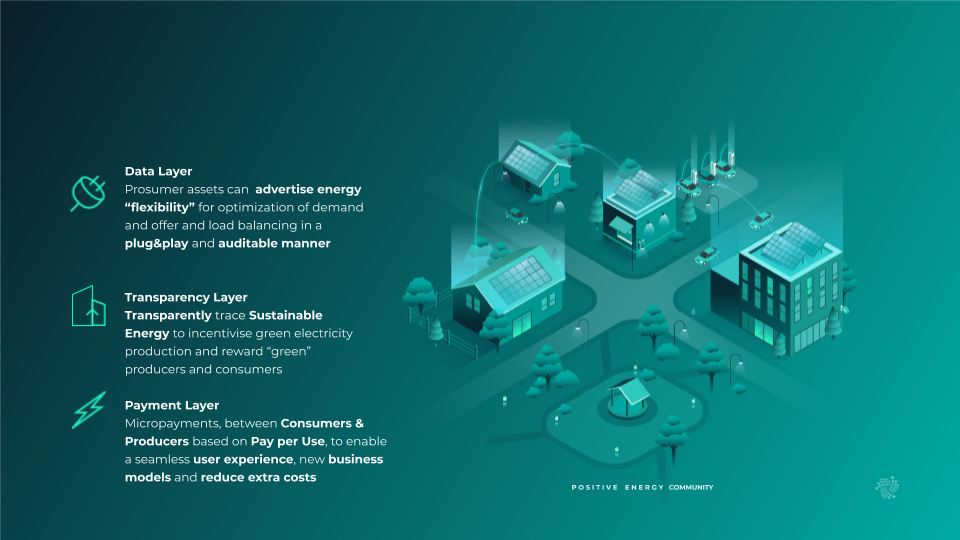
DLT-powered smart grid infrastructure — Why IOTA?
Due to the distributed nature of local energy markets, the case for developing trustworthy energy trading platforms with transparent data sharing and payment digital infrastructure is becoming more clear. To achieve this, distributed ledger technologies (DLT) should be leveraged. A DLT-based digital infrastructure can guarantee the audit-ability of exchanged data, the provenance of renewable energy supply, and process real-time and automated value transfer on a pay per use basis. Complexity is reduced when the same DLT provides real-time audit-ability of both data and value transactions.
However not all DLTs would fit those requirements. The selected ones should be able to directly integrate with energy assets and scale to the high number of transactions envisioned within a district or a city.
IOTA Tangle meets these requirements. Let’s see why.
IOTA can process value and data transactions on the same infrastructure. IOTA provides an open-source software technology that can be embedded directly with IoT devices (i.e., smart meters), allowing to extend the scope of this digital infrastructure innovation to the IoT edge of the electricity network. Energy assets can immediately share demand and supply for energy surplus, without the need for centralized data aggregation. IOTA Identity guarantees the authenticity of sources and integrity of shared data and helps to build the reputation of prosumers. Thanks to IOTA Streams, the confidentiality of information is controlled by their owners, and access can be granted only to selected platform operators. This promotes market agility and competition. At the same time, confidentiality, i.e., who sells to whom, can be maintained and only accessible to authorized parties, i.e., regulators.
Due to the feeless IOTA transactions, there are no unforeseen costs that might limit the use of such decentralized infrastructure. And this applies to both: sharing of required data or processing payments.
Furthermore, IOTA Access will allow even more dynamic energy trading scenarios, such as those including eMaaS (electric Mobility as a Service).
For that, think of an electric vehicle (EV) needing the energy to complete its journey. The vehicle will request available energy charging stations nearby using the energy flexibility marketplace. At the same time think of private charging station owners advertising their availability to charge nearby cars up to a given amount of energy. Once demand and offer are matched by the marketplace, the permission of access to the selected charging station can be given directly to the matched car, thus allowing only authorized vehicles to seamlessly charge from the station.
How can IF enable this innovative infrastructure?
In order to provide this infrastructure, we developed a number of hardware and software components. A simplified high-level overview of the implemented architecture is shown in the figure below.
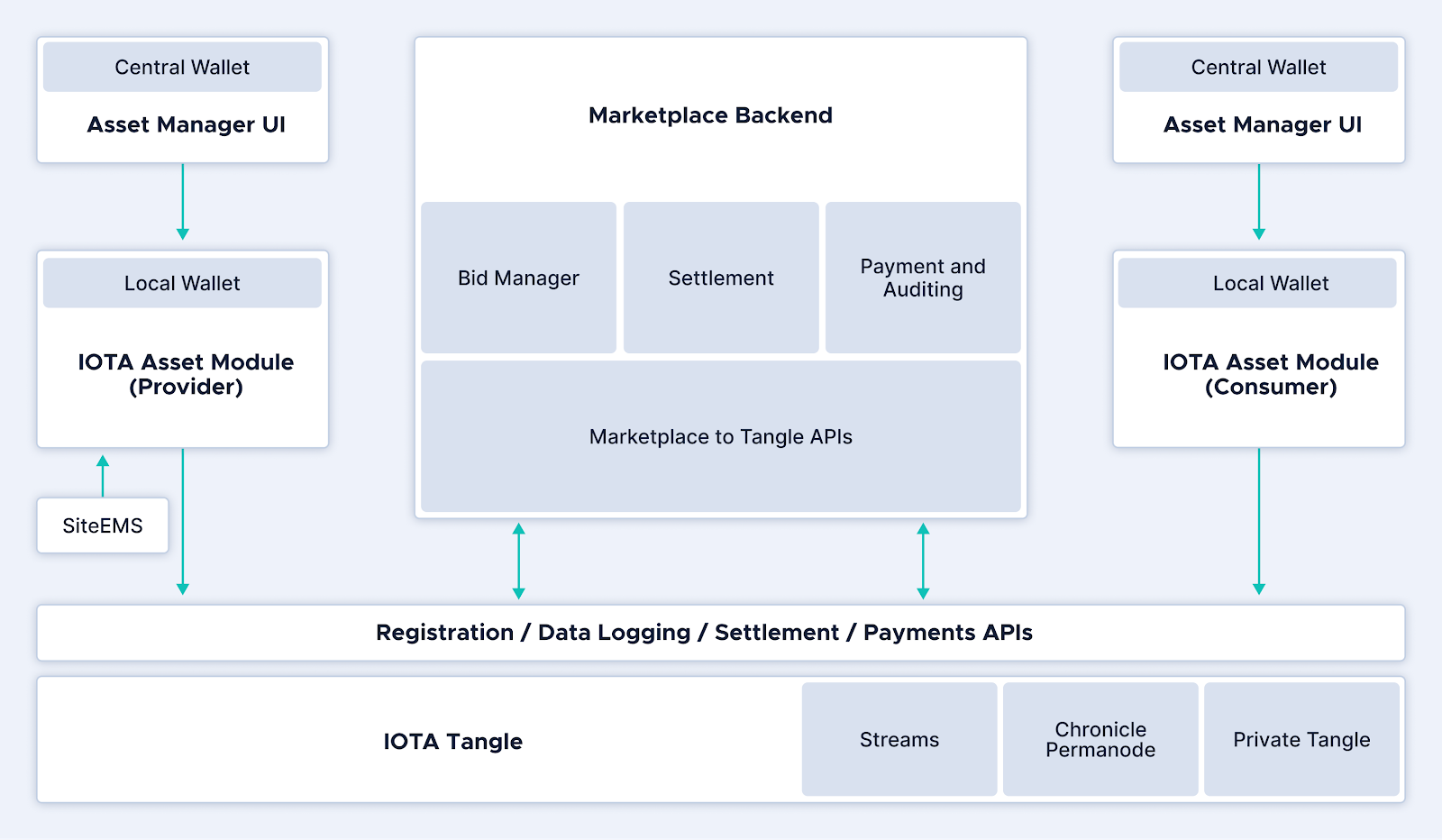
Our focus is on the data and payment infrastructure built on top of the IOTA Tangle, however, to demonstrate its value some additional components have been implemented. As mentioned, the IOTA Foundations' ambition is to bring the decentralization of this process to the edge of the electricity network and the ability to directly connect energy assets to the infrastructure. To this purpose, we first developed an IOTA Asset Module. It is an embedded IoT device (using a PyCom board) with an integrated energy meter and an IOTA Cryptocore that allows each energy asset to directly publish data onto the IOTA Tangle. The module can connect to local WiFi or to an LTE-M network, allowing it to be deployed over a range of energy assets and scenarios. It is compatible with different standards and can measure the connected asset energy either directly or through an asset integrated energy meter (i.e., ABB SiteEMS) connected through a provided HAN port. The device registers its identity (public key) on the IOTA Tangle thus allowing it to encrypt and sign all the generated messages.
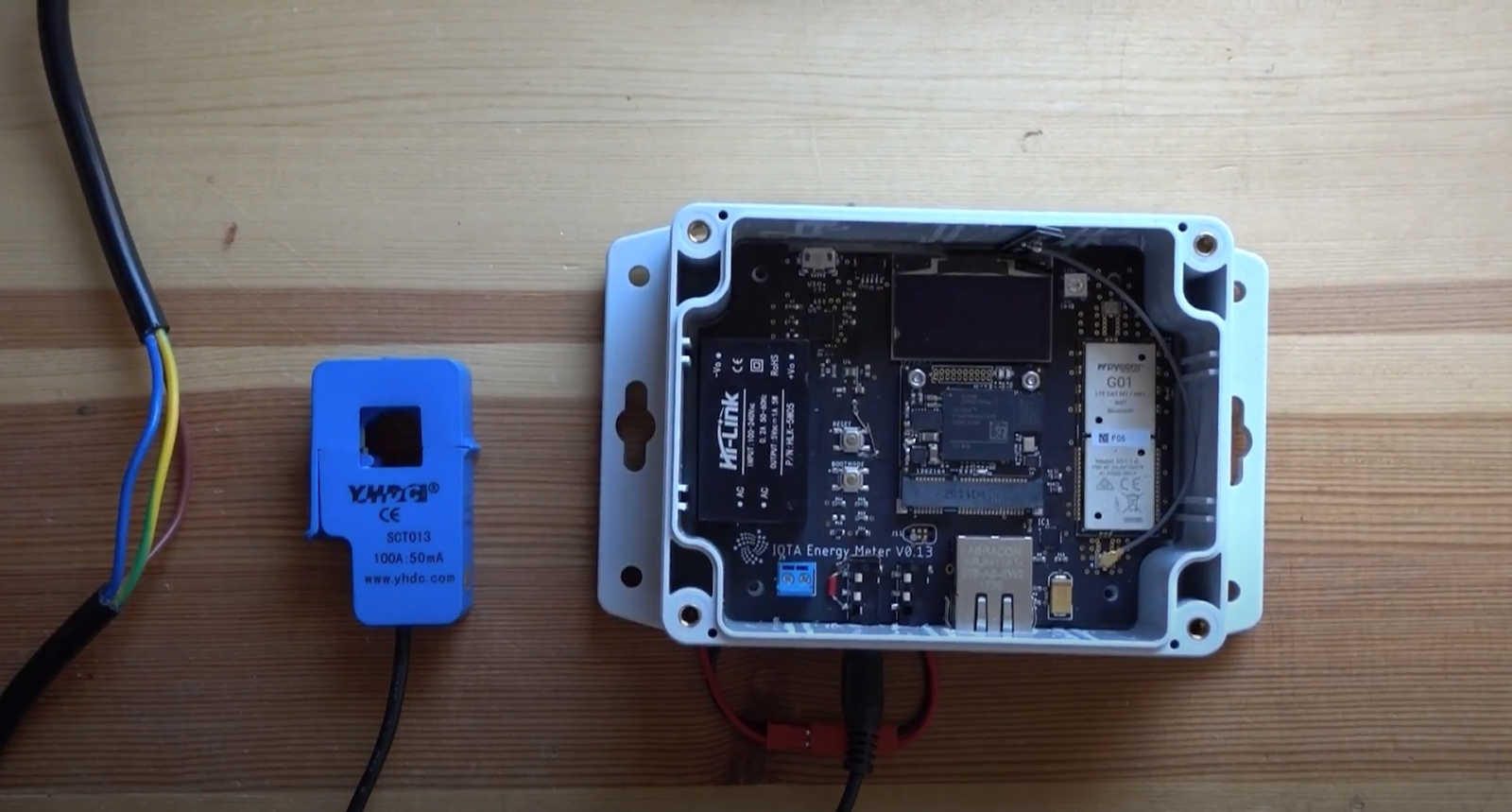
An Asset Manager UI is shown below and allows owners to configure the module with parameters such as cost for energy sold or price for energy purchased. Payments are performed directly from the device, which hosts an IOTA Wallet that can be funded using the same UI. The desired amount of tokens can be moved from a central wallet to the device wallet using the same UI. Alerts for when the local wallet balance falls below a threshold can also be set up as well as periodic withdrawals when the wallet balance exceeds a predefined limit. All the transactions in which the device is involved are logged on the IOTA Tangle and visible using the UI auditing features.
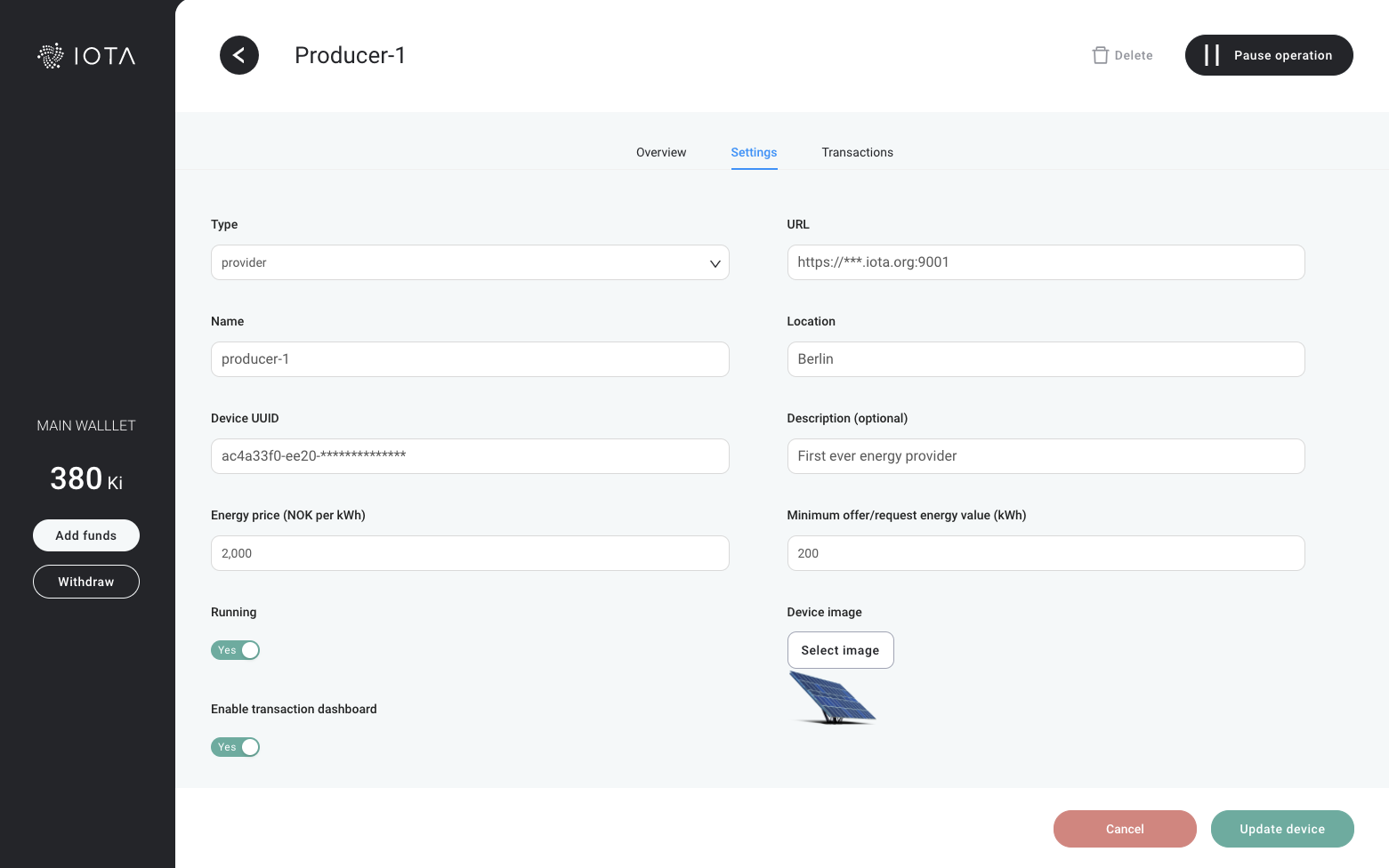
After initial configuration, the module automatically generates energy excess offers and demands for the connected asset, based on the predefined parameters, and posts them onto the Tangle infrastructure, using a Stream channel.
A number of standard APIs (Platform to Tangle APIs) allows our backend (developed for demonstration purposes) or any other trading platform backend to extract these demands and offers (if access to the relevant Stream is granted by its owner), validate the integrity of their source and automatically match them in order to maximize a given output.
At this stage, a very simple matching strategy was implemented in the connected Bid Manager (i.e., energy excess offered is more than the energy requested and the price is lower than the price offered). However, any more complex strategy can be adopted by platforms connected using the provided APIs. Once a match is created, an agreed bid is stored by the “settlement” module on the Tangle infrastructure (using the same standard APIs) for auditing purposes and a notification sent to the involved producer and consumer assets.
An exchange of energy can then be monitored by a settlement module that observes energy measurement posted by producing and consuming assets in a dedicated Stream channel opened for this specific purpose. Energy sent and received at the asset level is measured by the connected IOTA Asset Module. Once an exchange of energy is confirmed the “payment and auditing” module is triggered and a payment request from a consumer to producer is logged in the same Stream. The IOTA module monitors that the requested IOTA payment is processed, before triggering a dispute resolution process.
With the current implementation, the following workflow can be demonstrated, using the information shared on the Tangle infrastructure.
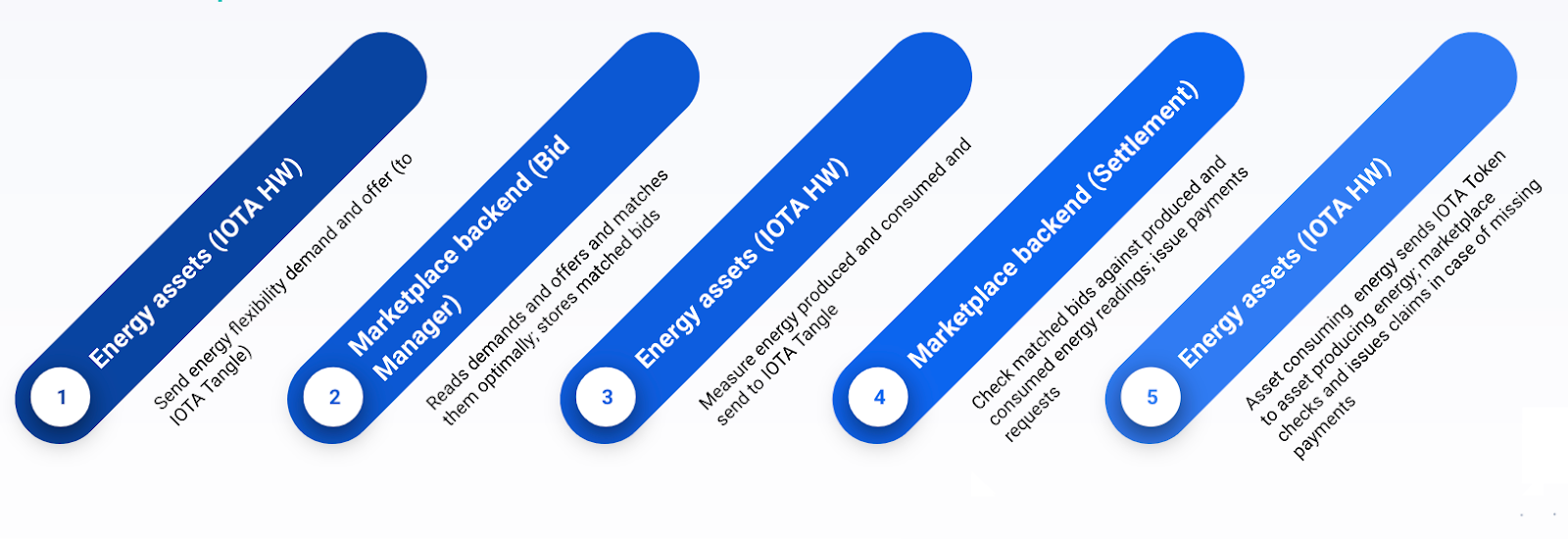
What’s next
The IOTA Foundations' mission is to enable new solutions that can benefit from the use of the IOTA ledger and other technologies. With this article, we have discussed how it is possible to improve the smart grid infrastructure to enable local energy platforms and marketplaces.
Further expanding such digital infrastructure with standard IoT APIs (i.e., FIWARE) for seamless assets integration and standard protocols for data exchange (i.e., OASIS eMIX) the prosumer's ability to connect to different marketplaces can be supported. At the same time, platform operators will also be able to connect different Distribution Energy Operators (DSO) and optimization algorithms.
To enable such interoperability there will also be the need for additional building blocks, which include:
- Interconnectivity gateways based on standard open APIs to allow access for any asset and any DSO, optimization algorithm. For that, we will explore various standards, including OASIS WG specification.
- IoT libraries and hardware integration for connecting energy assets with standard digital twins and integration with a full decentralized identity for things to guarantee the integrity of data, the authenticity of sources and allows to build reputation and energy credits for their owners.
To learn more about how you can support this infrastructure expansion, and develop required building blocks, please get in touch with the IOTA Foundation team at [email protected]. Research and academic organizations are most welcome at this stage.
Call to action: expression of interest
This infrastructure and marketplace are currently being deployed and used to connect energy-producing assets, i.e., photovoltaic panel arrays, and consuming assets, including batteries and EV chargers deployed in the Zero Energy Building, a living lab for sustainable energy research at the NTNU Campus, Trondheim.
To promote the use and adoption of this digital infrastructure outside of the +CityxChange project and partners and enable the development of the new smart city and urban peer-to-peer energy trading solutions, the IOTA Foundation also collaborates with Alpha Venturi. A Norwegian innovation and venture studio specialized in emerging technologies, Alpha Venturi incubates a spinoff venture and associated research and innovation initiatives leveraging the +CityXchange project and the components presented in this blogpost.
To accelerate the development and commercialization of market-ready solutions, leveraging this infrastructure, Alpha Venturi welcomes expressions of interest from:
- Potential users and beneficiaries from the energy, real estate, city, cooperatives and other sectors
- Testbeds and Living Labs keen to welcome future pilot initiatives
- Development & delivery partners from the Industry, Research, Academia or Association
Please get in touch with Alpha Venturi by contacting Wilfried Pimenta de Miranda via [email protected].

